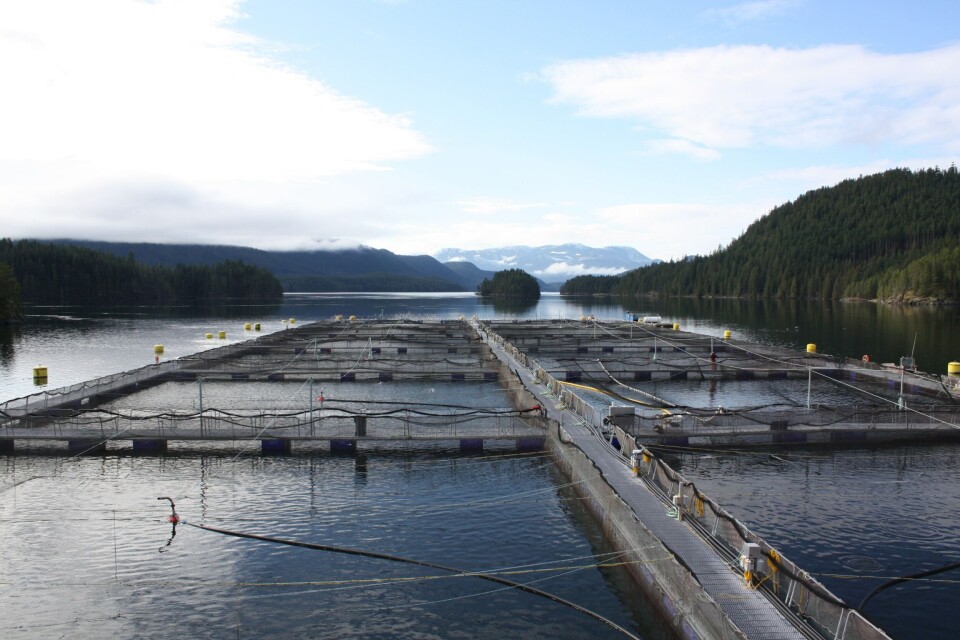
Norwegian companies losing money in Canada
The reports from all of these companies for the fourth quarter of 2012 are now available, and the numbers are not very good for the year just past especially compared with those a year or so ago;
|
| Marine Harvest | Mainstream | Grieg |
|
| Dressed weight, tonnes | Round weight, tonnes | Dressed weight, tonnes |
| Production, ’12 (’11), MT | 40,000 (33,900) | 19,200 (21,300) | 13,600 (13,200) |
| Sales, mill. NOK ’12 (’11) | 1,084 (1,182) | 589.5 (800.8) | 438 (491) |
| Operating result- 2012/Kg | -3.55 | -2.80 | -2.37 |
| Operating result- 2011/Kg | 1.29 | 5.90 | 2.87 |
1NOK ~ € 0.135, US$ 0.18
Some explanation for the situation is found in the various companies’ reports. For example, Marine Harvest suggests that;
In the Americas, the market situation is still concerning and Chilean costs continued to increase. The Canadian business is starting to see cost benefits from the restructuring measures carried out.
- Very low prices due to oversupply in the Americas
- Profitability cannot be restored until market balance is regained
- Positive cost development
- Effects of restructuring measures carried out in 2012
- Continued focus on cost positioning
Current US price well below break-even for Chile and Canada. Tough market conditions expected to continue The fourth quarter spot prices for fresh whole Canadian salmon increased compared to the third quarter of 2012, but were down compared to the fourth quarter of 2011. High supply of Chilean salmon is the main driver for the price reduction. Price increases were observed towards the end of the quarter as the market balance improved. Further price increases have been observed in the beginning of 2013, but the price level is still below a sustainable level. Although better than in the third quarter, the price achievement remained disappointing in the period, reaching only 98% of the reference price.
Similarly, Mainstream puts the blame on lower prices for its loss, but the company did receive some good news from the Canadian government in the form of compensation for fish ordered destroyed following the finding of a virus at one of its farms. For some reason Mainstream is using WFE "Wet Fish Equivalents" in its reports, while most other salmon farming companies provide reporting in dressed (head-on-gutted) weight. Said Cermaq’s Q4 2012 report:
The price difference on Atlantic salmon between Europe and Americas has increased further with significant impact for Mainstream’s results in Chile and Canada. The current market situation for Atlantics may continue for some months and put pressure on the profit contribution from Canada and Chile. The existing market imbalance between Europe and Americas is however expected to level out during 2013. Recent price increase in Americas supports recovery. Mainstream Canada received a compensation of NOK 15.4 million following the mandatory culling of the Millar Site due to an IHN outbreak in July 2012. The compensation is only included in the Cermaq Group figures. Atlantic whole fish traded at USD/lb 3.17 and USD/lb 1.98, respectively, in fourth quarter 2012, which was 16 percent and 15 percent lower compared to the same period last year and 3 percent and 1 percent lower than prior quarter, respectively.
Grieg Seafood reports “extraordinarily weaker results in UK and Canada”;
The results in Canada have been seriously affected by an outbreak of furunculosis in the smolt facility in BC, which has resulted in the eradication of a considerable part of the smolt held at the facility. A number of improvements have been implemented at the smolt facility in BC to minimize the risk of similar disease outbreaks in the future. However, on the positive side, the biological development of the seawater production in Canada has been stable and satisfactory over the last few years. For the second successive year, the two Norwegian regions and Canada have achieved the best feed conversion ratio ever recorded.






















































